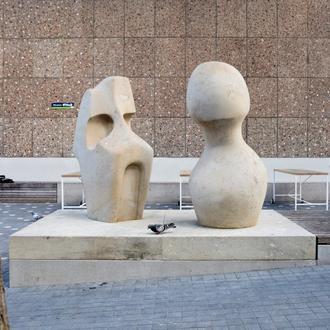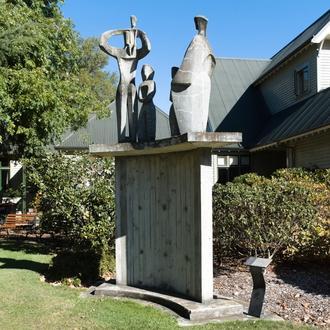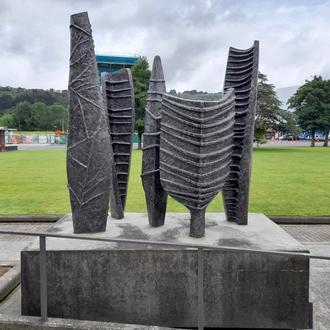Russell Clark
b. 1905d. 1966
Also known as:
- Russell Stuart Cedric Clark
5 Artworks
Russell Clark was born in Christchurch and studied at Canterbury College School of Art. After graduating, in 1925, he joined the school as part-time staff while also being an active member of the Canterbury Society of Arts. At this time he began exhibiting elsewhere in New Zealand including the Society of Arts in Otago, Auckland and the Academy in Wellington.
In 1928, needing a regular income, he left the school and worked as a commercial artist first in advertising and then for a printer and publisher in Dunedin. He also held evening and Saturday morning classes at McIndoe’s Design Studio, attracting many young Dunedin artists including Doris Lusk and Colin McCahon.
In 1936 he received his first major commission, to paint a 25-panel mural for the City Hotel in Princes Street, Dunedin. This was followed in 1939 when Clark was one of three artists commissioned to paint murals for the New Zealand Centennial Exhibition building in Wellington.
Choosing to stay in Wellington, between 1939 and 1962 Clark was the first designer and illustrator for the New Zealand Listener. In 1940 he also began his long association with the New Zealand School Journal.
During the war Clark worked for the army as a sign-writer and then, in 1944, as an official war-artist. This led to the travels through Polynesia and Melanesia that stimulated Clark's interest in Māori art and culture.
Discharged after the war, Clark returned to a teaching position at the Canterbury University School of Art, and once again focused on his own art practice, exhibiting in both solo and group shows. The 1950s was his most productive and experimental period as an artist: he painted, made murals and sculpted utilising distinctly New Zealand images. A visit to the Tūhoe people of the Urewera’s on assignment for the School Journal provided new stimulus.
By the late 1950s, sculpture was his dominant art form and he was strongly drawn to the stylistic direction of the British sculptors Barbara Hepworth and Henry Moore. At this time he was also becoming sought after by architects to work on commission for both corporate and public projects.
In July 1966 while still lecturing at the Canterbury School of Fine Art, Clark became gravely ill and died shortly after.
See also:
- Neil Roberts. 'Clark, Russell Stuart Cedric', Dictionary of New Zealand Biography, Te Ara - the Encyclopedia of New Zealand.
- Catalogue of Russell Clark Retrospective Exhibition at Robert McDougall Art Gallery, Christchurch, 1977.
- Alexander Turnbull Library archival material relating to 'The Ear' (1957) and Clark's art practice.

Russell Clark, ‘The Ear’ (1957), Timaru Telephone Exchange (former), Te Tihi-o-Maru Timaru
Image: Bronwyn Holloway-Smith, Public Art Heritage Aoteraroa New Zealand, 2021




![Untitled [Temperance and General Insurance Company]](/_next/image?url=https%3A%2F%2Fcdn.sanity.io%2Fimages%2Faem3610x%2Fproduction%2F038cf9862300614a86568ff071a0bce271ce69bc-641x768.jpg%3Frect%3D0%2C64%2C641%2C641%26w%3D330%26h%3D330%26fit%3Dclip&w=750&q=75)
